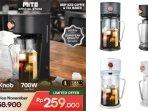Kunci Jawaban
Kunci Jawaban Bahasa Inggris Kelas 9 SMP Kurikulum Merdeka Hal.38 Noun Groups, Animal Characteristic
Kunci jawaban soal buku English for Nusantara untuk SMP/MTs Kelas IX Worksheet 1.5 halaman 38, Noun Groups - the characteristics of an animal.
TRIBUNNEWSBOGOR.COM - Simak kunci jawaban dari salah satu tugas soal Bahasa Inggris Kurikulum Merdeka untuk kelas 9 SMP/MTS Semester 1.
Yang dibahas dalam artikel ini adalah kunci jawaban dari soal dalam buku English for Nusantara untuk SMP/MTs Kelas IX, Chapter 1 Bekantan, "Unit 1. Bekantan" Section 4 - Language Focus, Worksheet 1.5 halaman 38.
Pada bagian a. Noun Groups, siswa diminta untuk memperhatikan penjelasan mengenai apa itu Noun Groups, lalu mengelompokkan apa saja yang termasuk Noun Groups pada enam kalimat dalam Worksheet 1.5.
Adapun kunci jawaban dalam artikel ini dibuat hanya sebagai referensi atau contoh belajar siswa untuk mengerjakan soal secara mandiri.
Perlu dicatat pula, paparan soal dan kunci jawaban dalam artikel ini hanya ditujukan kepada orangtua untuk memandu proses belajar.
Selain itu, apabila siswa masih mengalami kesulitan menyerap materi, harap segera mengajukan pertanyaan atau diskusi dengan guru.
Baca juga: Kunci Jawaban Bahasa Inggris Kelas 12 SMA Kurikulum Merdeka Hal. 202: Renewable Energy, Fossil Fuel
Baca juga: Kunci Jawaban Bahasa Inggris Kelas 11 SMA Kurikulum Merdeka Hal. 83: Dirty Beach and Marine Polluter
Baca juga: Kunci Jawaban Bahasa Inggris Kelas 9 SMP Kurikulum Merdeka Hal. 33-35: Bekantan is endangered

BUKU English for Nusantara | untuk SMP/MTs Kelas IX
Chapter 1 | Bekantan
Section 4 - Language Focus
Unit 1. Bekantan
Halaman 38
a. Noun Groups
Study the following explanation about how to describe the characteristics of an animal. Then, do the exercise that follows. Number 1 has been done as an example.
To give more information about an animal, we can use a noun group.
Take a look at these examples:
• A long-nosed monkey
• A reddish-brown monkey
A noun group is a group of words around a noun or a headword. It contains a main noun (e.g. A monkey). The other words in the noun group such as long-nosed, reddish-brown are adjectives. They tell more about the main noun. We write the adjectives before the noun.
Let’s take a look at the following examples:
• Monkey
• The monkey
• The big monkey
• The big, long-nosed monkey in a mangrove tree
• The big, long-nosed, reddish-brown monkey in a mangrove tree
• The big, long-nosed, reddish-brown monkey in a mangrove tree is playing.
Worksheet 1.5
The noun groups above are all about a monkey. We can see that as the sentences get longer, the adjectives give us more information about the monkeys. The descriptive words help us picture the monkey clearly. Using noun groups helps us to communicate a lot of information in a quick way.
1. The two big, long-nosed, hairy monkeys are climbing the mangrove trees.
2. A strong, large, black gorilla is feeding on bamboo shoots.
3. That big, tall, grayish black mammal is called an elephant.
4. Orangutans are large, reddish-orange primate that are famous for their intelligence.
5. The female Helmeted Hornbill has a bluish white featherless patch on its neck.
6. Komodo dragons are the largest living lizards on Earth.
ANSWERS
1. The two big, long-nosed, hairy monkeys.
2. A strong, large, black gorilla.
3. Big, tall, grayish black mammal.
4. Large, reddish-orange primate
5. A bluish white featherless patch.
6. The largest living lizards.
(TribunnewsBogor.com)
:quality(30):format(webp):focal(0.5x0.5:0.5x0.5)/bogor/foto/bank/originals/bekantan-dkfmg.jpg)
:format(webp):focal(0.5x0.5:0.5x0.5)/bogor/foto/bank/originals/Najwa-Shihab-today.jpg)







:format(webp):focal(0.5x0.5:0.5x0.5)/bogor/foto/bank/originals/ILUSTRASI-Mata-Pelajaran-Bahasa-Inggris-bd3.jpg)
:format(webp):focal(0.5x0.5:0.5x0.5)/bogor/foto/bank/originals/eng-lfok3.jpg)
:format(webp):focal(0.5x0.5:0.5x0.5)/bogor/foto/bank/originals/english-lesson-fk2.jpg)


:format(webp):focal(0.5x0.5:0.5x0.5)/bogor/foto/bank/originals/latihan-soal-ilustrasi.jpg)
:format(webp):focal(0.5x0.5:0.5x0.5)/bogor/foto/bank/originals/kunci-jawaban-ips-medsos.jpg)

:format(webp):focal(0.5x0.5:0.5x0.5)/bogor/foto/bank/originals/bel-f.jpg)